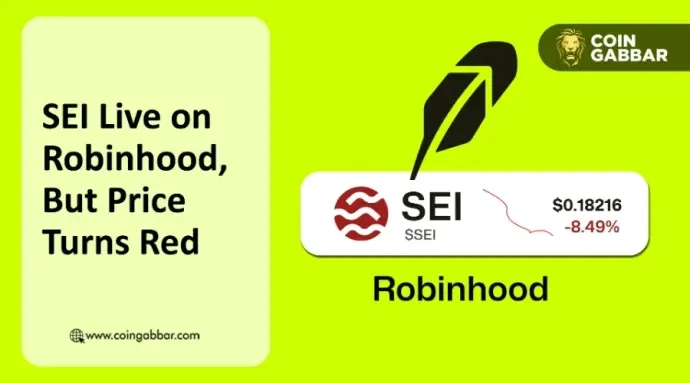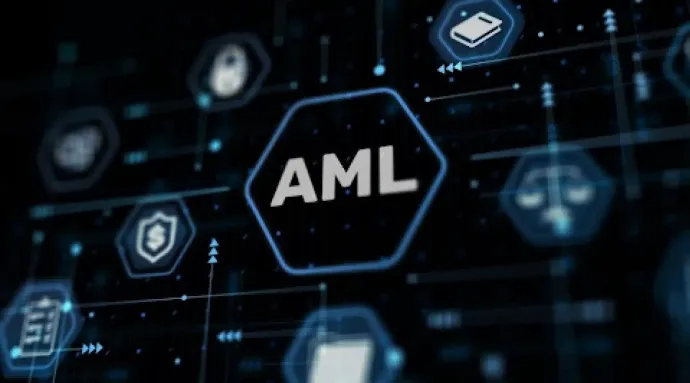Web3 prediction markets are fundamentally changing the way we predict reality by utilizing blockchain technology to gather and aggregate information from different participants. These platforms embody the principle of "collective wisdom," creating efficient markets where participants express their beliefs through betting and truly engage in the process. Authored by: IOSG Ventures Acknowledgments: Thanks to Wang Chao of Metropolis DAO for valuable editing suggestions.
As these platforms grow, they are witnessing astonishing growth. As a leader, Polymarket saw its trading volume soar to $360 million in July 2024, fifty times higher than its 2023 average. This surge was directly related to the U.S. presidential election event, with over 99% of bets concentrated on predicting the election outcome. Beyond political fervor, these markets also predict the first meme coin with a market cap of $1 billion or the next viral TikTok theme. Source: Token Terminal
With the maturation of these markets and the emergence of more innovations and enormous growth potential, a question arises: What will the next generation of prediction markets look like? Whether through technological advancements, improved user experiences, or expansion into new scenarios, the future of Web3 prediction markets is poised to optimize and transform our collective prediction and response to emerging trends.
Challenges Faced by Prediction Markets 1.1 Liquidity and Market-Making Challenges 1.1.1 The dilemma of long-tail events, such as predicting the discovery of habitable exoplanets, presents a typical long-tail challenge in pricing rare events due to their uncertainty and speculative nature, resulting in low liquidity. High granularity events in prediction markets often struggle to attract participants, leading to thin order books and limited trading activity. This lack of liquidity makes it difficult for traders to place orders, ultimately weakening market effectiveness and causing these potentially high-interest but slow-to-resolve prediction markets to be overlooked. 1.1.2 The impermanent loss of liquidity providers (LPs) – participants who provide assets to liquidity pools to facilitate trading – faces significant risks due to impermanent loss. For example, in a prediction market on whether a candidate will win an election, as the event's outcome becomes more certain, the price of the related tokens tends to approach zero or one. Early liquidity providers may hold an excessive amount of tokens predicting "failure," which ultimately go to zero, resulting in significant impermanent loss.
1.2 User Engagement and Market Attractiveness 1.2.1 Inadequate ceilings – in the crypto world, everyone is chasing the next 100x opportunity, making prediction markets relatively ordinary. To compete, prediction markets can introduce gamified elements, such as dynamic event markets or reward systems, loyalty programs, or tiered rewards, to enhance user engagement and make the truth-seeking process as exciting as speculating on meme coins. 1.2.2 Market diversity and long-term predictions – prediction markets need to diversify beyond political events to sustain long-term user engagement. While sports and entertainment already have established niche markets, the opportunity lies in creating specialized markets that cater to specific interests, such as predicting the release of ChatGPT-5. However, a common criticism is that even within broader topics, users may only focus on specific themes, making these markets highly seasonal. Additionally, markets need to run for extended periods with uncertain outcomes, which may hinder sustained user interest. To address these challenges, prediction platforms should focus on rapidly creating and concluding niche markets that align with user interests, balancing the demand for user engagement with the feasibility of prediction markets.
1.3 Regulatory Barriers Regulatory hurdles remain a significant obstacle to the development of prediction markets. The U.S. Commodity Futures Trading Commission (CFTC) imposed a $1.4 million fine on Polymarket in 2022, demonstrating the risks of operating unregistered platforms. This regulatory action led Polymarket to ban U.S. users from its platform to comply with the settlement agreement. However, the challenge is far from over, as recent developments have subjected election-related prediction markets to stricter scrutiny. In 2024, the CFTC proposed a rule to ban derivative trading on U.S. elections, citing the potential impact of such markets on election results. Source: CoinDesk
This proposed ban has a significant impact on platforms reliant on political betting markets, such as Polymarket, PredictIt, and Kalshi. Senator Elizabeth Warren publicly urged the CFTC to completely shut down election prediction markets, citing concerns about potential disruptions to the democratic process. These platforms are currently involved in legal battles to resist these regulatory measures. This situation highlights the delicate balance prediction markets must maintain between innovation and compliance. As the regulatory environment becomes more complex, these platforms will need to adapt, or they may face significant operational restrictions, potentially stifling the growth and diversification of this emerging industry.
The Next Generation of Prediction Markets Despite the numerous challenges faced by today's prediction markets, a new wave of innovative prediction markets is on the horizon. The next generation of prediction markets is specifically designed to address these obstacles, integrating advanced technology, enhanced market mechanisms, and user-centric features. These upcoming platforms aim to overcome liquidity, user engagement, and regulatory constraints, potentially reshaping the landscape of prediction markets for a more robust and dynamic future.
2.1 Advanced Market Mechanisms 2.1.1 Specialized liquidity solutions – dedicated market makers can unlock collective knowledge by providing liquidity for complex outcomes. An innovative example in this field is the point-to-point liquidity model adopted by projects like Azuro. This model pools capital into a single counterparty to meet the platform's traders' needs, ensuring sufficient liquidity even for niche markets to operate effectively. This system supports a broader range of prediction markets, making it easier to maintain liquidity for long-tail events, such as the impact of a specific technological breakthrough. By aggregating liquidity from different participants, this model disperses risk across multiple markets, reducing the likelihood of liquidity shortages and enhancing the overall robustness of the platform. Source: Azuro
2.1.2 Leverage and combination betting – advanced betting strategies such as leverage betting and combination betting offer participants the ability to win in more diverse ways. Leverage betting allows participants to increase potential returns by increasing their bets, particularly appealing in high-risk markets like political predictions. Source: CT Combination betting merges multiple predictions into a single bet, offering higher potential returns. For example, users can combine bets on multiple related economic events, such as interest rate changes and inflation data within a quarter. The interconnectedness of these events increases potential returns but also comes with higher risks. The social aspect of combination betting adds another layer of excitement. Participants can share their combination bets on social media, potentially creating viral spread when someone wins a large prize, particularly within the crypto community. However, managing the risk associated with significant returns, paying out, and setting accurate odds remains a challenge. The peer-to-peer combination betting system implemented on the Web3 sports betting platform SX Bet allows users to create customized bets, with liquidity provided by automated market makers. This innovation brings a more dynamic and appealing outlook to prediction markets across various domains. Source: SX Bet
2.1.3 Permissionless market creation – user-created non-permissioned markets have the potential to significantly expand the scope of predictable events. By allowing anyone to create markets, platforms can tap into predictive capabilities in unexpected areas. For example, niche audiences may create markets to predict the success of a specific meme or the outcome of a specific event, which are often overlooked by large platforms.
Swaye is innovating in this field, allowing users to create markets related to event outcomes, and participants can even create or trade meme coins related to these outcomes. Users who are frustrated with the high opportunity costs and inability to create markets on traditional platforms can turn to Swaye, where they can generate markets and earn fees. For example, a user might create a market predicting whether the monkeypox virus will be declared a pandemic by a specific date. Outcome tokens, such as $MPOX and $NOPOX, will represent possible outcomes, with failed tokens going to zero and successful tokens potentially becoming permanent meme coins. Source: Swaye App
2.2 Enhanced User Experience and Engagement 2.2.1 Mobile-first and real-time prediction optimization Optimizing for mobile is crucial for capturing real-time insights. Imagine a mobile prediction market experience where users can interact and place bets during real-time events, such as sports matches or political debates. Notifications and real-time updates can keep users engaged, allowing them to make predictions and immediately view results anytime, anywhere.
2.2.2 Integration with social networks Leveraging existing social media channels is an effective way to attract more users and enhance prediction market participation. By integrating with platforms like Farcaster and Solana's Blink, prediction markets can utilize established networks for distribution and user interaction. Projects like Swaye and Bookie are already moving in this direction, enabling users to directly share their predictions in social feeds, creating viral moments and driving participation. Source: /swaye on Farcaster
This integration can make prediction markets more accessible and attract a wider audience, as users can seamlessly participate in predictions shared within their social circles.
2.2.3 Gamification and social dynamics Gamifying prediction markets can further enhance their appeal, transforming them from mundane activities into engaging competitions. Features such as leaderboards, achievement systems, and competitive leagues can significantly boost user engagement. Imagine participating in a social prediction league, earning badges based on accuracy, and climbing the ranks. KOL-led predictions add another layer of social appeal, with KOLs sharing their bets, encouraging their followers to join and compete, deepening community involvement and interaction.
2.3 AI Integration AI is expected to fundamentally change the landscape of prediction markets, addressing long-standing challenges and unlocking new possibilities. As suggested by Ethereum co-founder Vitalik Buterin, the intersection of AI and cryptocurrencies, particularly in the application of prediction markets, could be the "holy grail of cognitive technology."
2.3.1 Content creation and event selection AI can significantly enhance the process of creating events in prediction markets. By analyzing trends in news, social media, and financial data, AI can timely identify relevant topics, capturing current public interests. For example, AI can identify emerging global issues, such as sudden geopolitical conflicts or technological breakthroughs, and use them as themes for prediction markets, ensuring market dynamics and alignment with current prediction market themes.
2.3.2 Market-making and liquidity AI-driven liquidity management is increasingly gaining attention in prediction markets. While specific implementations are still evolving, AI may eventually play a crucial role in dynamically adjusting liquidity depth and pricing in real-time. By monitoring market activity and sentiment, AI can optimize liquidity provision, reduce slippage, and enhance market stability. This approach is particularly valuable in markets with rapidly fluctuating liquidity demands.
2.3.3 Information aggregation and analysis AI systems can quickly process large amounts of data, providing comprehensive predictions and making prediction markets the preferred source for informed decision-making. By aggregating data from various sources, such as economic indicators, public sentiment, and historical trends, AI can offer highly accurate predictions, making prediction markets more reliable and insightful. For example, the integration of Polymarket with Perplexity will allow the aggregation of search engine and social media sentiment, creating news summaries for users and providing visual data to help users make wiser decisions.
2.3.4 AI as market participants The role of AI as active participants in prediction markets is expected to significantly expand. Platforms like OmenETH have already demonstrated how AI bots can trade alongside humans, improving market depth and enhancing prediction accuracy. These AI bots are particularly adept at identifying and exploiting price differentials, helping maintain market consistency and efficiency. Source: Gate.io
The potential of AI extends beyond trading. By participating in niche and long-tail markets—such as predicting the outcome of specific scientific breakthroughs or the impact of new regulations on niche industries—AI can make these previously low-liquidity markets more viable. The ability of AI systems to handle large amounts of data and respond rapidly to new information can ensure that these specialized markets remain active and attract participants. One project dedicated to enabling the construction of these AI agents is Autonolas. Additionally, AI may also fundamentally change the dispute resolution process in prediction markets. AI-driven systems can provide fair and efficient rulings in disputed outcomes (such as close elections), reducing the time and cost involved in traditional manual arbitration.
2.4 ZK Keeps Predictions Private In prediction markets, privacy is crucial not only for keeping bets secret but also for ensuring the normal operation of markets. If everyone can see each other's predictions, there is a risk of replicating the most successful predictors, which could weaken the diversity of opinions in these markets. To address this issue, platforms can use privacy-preserving technologies to keep predictions confidential until the event results are revealed. For example, a method called "commit-reveal" allows participants to submit predictions in a way that remains hidden until the results are revealed. This process is similar to sealing your prediction in an envelope that can only be opened by the blockchain at the right time. Platforms can also implement advanced encryption technologies, such as zero-knowledge proofs (ZKPs), to provide stronger privacy guarantees. These methods ensure that predictions remain anonymous without sacrificing market transparency and security. While these technologies are powerful, they also come with trade-offs, such as increased computational costs, which platforms must carefully weigh.
- Conclusion As the 2024 election cycle comes to an end, the future of prediction markets is at a critical crossroads. Optimistic views suggest that these platforms will expand into diverse fields such as finance, technology, and science, benefiting from AI integration and advanced market mechanisms. This evolution could transform prediction markets into essential decision-making tools, shaping the future with collective wisdom. However, pessimistic views argue that prediction markets face significant challenges. They often struggle with limited demand, passive fund inflows from savers, and insufficient participation from key players such as sharp traders. Competition from traditional financial instruments and regulatory pressures may also limit their growth. During major political events, trading volume is concentrated in a few key markets, raising questions about sustainability. User engagement may sharply decline after the 2024 election, making it difficult for prediction markets to maintain momentum and expand their utility beyond speculation. Despite these challenges, the potential of prediction markets to redefine our ability to predict and shape the future is undeniable. The road ahead is uncertain, but if these platforms can address the challenges, they may become cornerstones of a new era—where collective wisdom is not just a tool for speculation but a force driving historical processes.
免责声明:本文章仅代表作者个人观点,不代表本平台的立场和观点。本文章仅供信息分享,不构成对任何人的任何投资建议。用户与作者之间的任何争议,与本平台无关。如网页中刊载的文章或图片涉及侵权,请提供相关的权利证明和身份证明发送邮件到support@aicoin.com,本平台相关工作人员将会进行核查。




